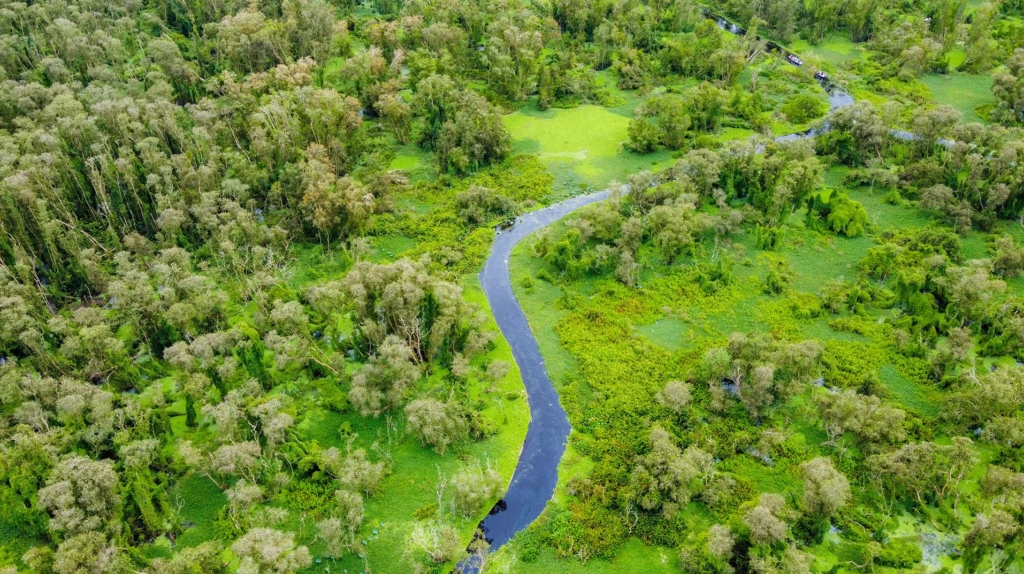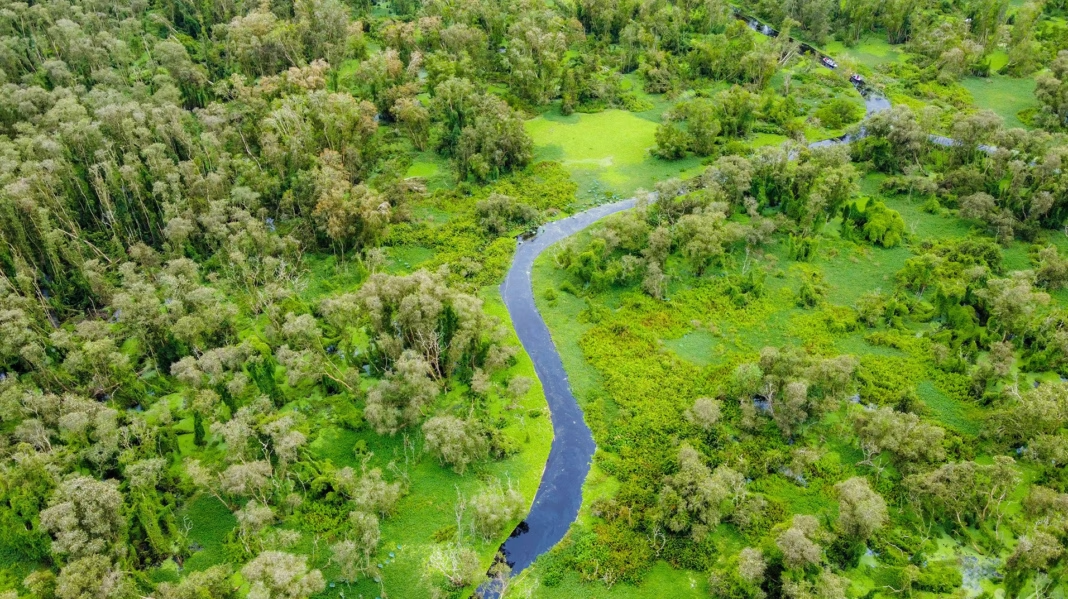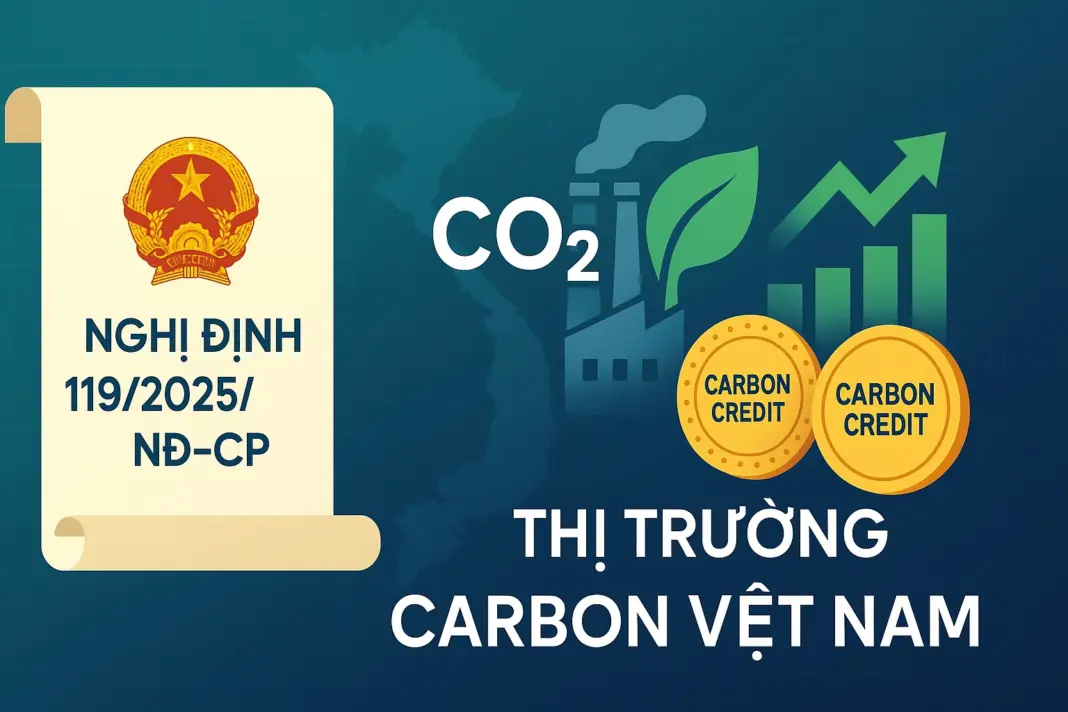Recently, the world’s leading forestry investment fund made its first deal in Vietnam by investing in TAVICO, one of the country’s top wood-processing firms. Could this transaction play a decisive role in upgrading Vietnam’s forestry value-chain?
Thị trường Carbon will walk you through the opportunities to build a sustainable value chain for Vietnam’s forestry sector.

Vietnam’s Forestry Sector: a Global “Powerhouse” with Boundless Green Potential
Vietnam’s status as a forestry “powerhouse” is undeniable. Exports of wood and wood products have grown impressively, reaching almost USD 4 billion in Q1 2025 and targeting an ambitious USD 18 billion for full-year 2025. Vietnamese wood products are now present in more than 150 countries and territories, underscoring their competitiveness and global acceptance.
Several factors underpin this strength. First is a plentiful supply of plantation timber, with annual harvests estimated at 22–23 million m³. Of Vietnam’s 14.6–14.8 million ha of forest, plantations account for roughly 30 – 32 %. In parallel, state policies are pivotal in driving sustainable development—most notably the “Sustainable and Efficient Wood-Processing Industry Development Plan 2021-2030” and the “Vietnam Forestry Development Strategy”, which aim to certify 1 million ha of sustainably managed forest by 2030. A wide network of free-trade agreements (FTAs) also confers tariff advantages that open global doors for Vietnamese goods.
Yet significant challenges remain. Traceability and legality requirements are tightening—especially in major markets such as the United States (currently absorbing 56 % of Vietnam’s wood exports) and the EU, where the EU Deforestation-free Regulation (EUDR) will be fully enforced for large companies by end-2025. The sector must also increase investment in modern technology, boost product quality, and shift toward higher-value items instead of raw or semi-processed exports. Dependence on imported high-grade timber for premium product lines is still notable.
Against this backdrop, a decisive shift toward sustainable forestry is inevitable. Certified forest areas (FSC, PEFC, etc.) have already surpassed 500,000 ha and continue to expand.
While initially perceived as a barrier, the EUDR is becoming a strong catalyst. Its demand that products entering the EU be deforestation-free and fully traceable exerts heavy pressure but simultaneously offers an opportunity for Vietnam’s complex supply chains to renew themselves. Pioneering firms that invest in robust, transparent management systems and certified plantations—such as TAVICO in partnership with New Forests—will hold a clear competitive edge. In this sense, the EUDR is not merely a challenge but the needed impetus to elevate Vietnam’s wood sector to higher standards that boost its global standing.
Another crucial issue is balancing ambitious export targets with a sustainable domestic supply. Although Vietnam is a major wood exporter, it must still import considerable high-quality raw material for value-added manufacturing. Domestic plantation timber is largely small-diameter logs destined for woodchips and pellets. Producing sophisticated, high-value furniture demands stable supplies of large, high-quality logs. Heavy investment in large-diameter certified plantations (the 1 million ha target by 2030) is therefore essential.
Table 1: Key statistics of Vietnamese Forestry Sector
| Target | Number | Source |
| Total forest area | ~14,8m ha | |
| Wood-export turnover (Q1 2025) | ~4b USD | |
| Export target (2025) | 18b USD | |
| Certified forest area (current) | >500.000 ha | |
| Certified forest target (2030) | 1m ha |
The Carbon-Credit “Gold Rush”: Vietnam’s Emerging Market
Vietnam’s strong pledge at COP26 to reach net-zero emissions by 2050, and its entry into the Just Energy Transition Partnership (JET-P), have provided vital momentum for a domestic carbon market. The legal foundation is Decree 06/2022/ND-CP, which outlines a clear roadmap:
-
Up to 2027 – develop regulations on carbon-credit management, exchange rules and pilot mechanisms.
-
From 2025 – launch a pilot carbon-credit exchange.
-
From 2028/2029 – commence full nationwide operation of the exchange.
Early successes signal promise. Vietnam received USD 51.5 million from the World Bank for reducing 10.3 million t CO₂ via forest protection (REDD+) in 2018-2019 proof of forests’ vast financial potential through carbon credits. Vietnam is no newcomer: by March 2025 it had implemented 274 CDM projects, 43 Verra VCS projects, and 45 Gold Standard projects. The Khe Nước Trọng REDD+ project is a flagship example.
With >14 million ha of forests, the sector is central to national emission-reduction and carbon-sink efforts. Potential forestry-carbon project types include Afforestation, Reforestation & Revegetation (ARR), Improved Forest Management (IFM) and REDD+ offering large opportunities as demand for high-quality credits rises at home and abroad. Government and international support (World Bank, ADB, UNDP) further improves project conditions.
Challenges persist: detailed legal frameworks are still evolving, leaving some uncertainty; MRV transparency and reliability must improve; many firms lack capacity and awareness; and up-front financing, especially for SMEs, remains a barrier.
The success of World Bank Emission Reduction Payment Agreements (ERPAs) focused on regional-scale REDD+ lays groundwork for smaller, privately or community-led forest-carbon initiatives. ARR and IFM projects are expected to flourish. New Forests’ investment in TAVICO, aimed at expanding FSC plantations, could become a pioneer model where professional funds help enterprises develop concrete forest-carbon projects, leveraging lessons from large-scale national programs.
Another noteworthy point is the convergence of the domestic compliance market and international voluntary market. With an upcoming national exchange and rich experience in standards like Verra and Gold Standard, Vietnam is well-positioned to build a diverse, dynamic carbon ecosystem. Credits from CDM, JCM, Paris Agreement Article 6, and domestic projects may all become tradable—an attractive advantage for early investors.
Table 2: Roadmap for Vietnam’s Carbon-Market Development (Decree 06/2022/ND-CP)
| Period | Key milestones |
| Up to 2027 | Draft regulations & policies; pilot exchange and offset mechanisms |
| From 2025 | Pilot operation of the carbon-credit exchange |
| Từ năm 2028/2029 | Nationwide official operation of the exchange |
Through the Investor’s Lens: Navigating Opportunities in Timber & Carbon
The New Forests–TAVICO partnership is more than a financial deal. It validates a forward-looking model where sustainable timber production not only yields high-quality physical goods but also generates new income from forest ecosystem services—notably carbon credits. Participation by professional funds with strict ESG criteria and deep global experience delivers a powerful boost, pushing investee companies like TAVICO to adopt world-class sustainability standards. This strengthens export competitiveness and positions them to engage effectively in the nascent carbon market.
For investors and businesses seeking opportunities in sustainable forestry and carbon credits in Vietnam, several key points matter:
-
Rigorous due diligence on genuine sustainability, transparent timber traceability and credible carbon-credit potential with robust MRV.
-
In-depth legal insight: closely track evolving regulations on carbon markets and forestry.
-
Strategic partnerships: collaborate with local experts, experienced carbon-project developers and, critically, local communities.
Sustainable forestry and carbon-credit investment demands a long-term vision aligned with Vietnam’s green-growth goals and global sustainability trends. Accessing emerging green finance and credit products in Vietnam will open crucial funding avenues. Although green credit for forestry is still small, its growth potential is vast as carbon markets and sustainability requirements gain prominence.
In an early-stage carbon market like Vietnam’s, first movers in high-quality forest-carbon projects can secure a “first-mover advantage.” With the exchange piloting from 2025 and credit demand set to surge, early participants who build reputable, internationally compliant projects may not only capture higher returns as the market matures but also help set best-practice standards.
Nonetheless, regulatory risk cannot be ignored. Ambiguity or sudden policy shifts could affect project viability. A prudent strategy is to anchor projects to widely recognized standards such as Verra or Gold Standard; credits from these projects enjoy higher liquidity on the global voluntary market even if the domestic compliance market remains unsettled.
Thị trường Carbon







